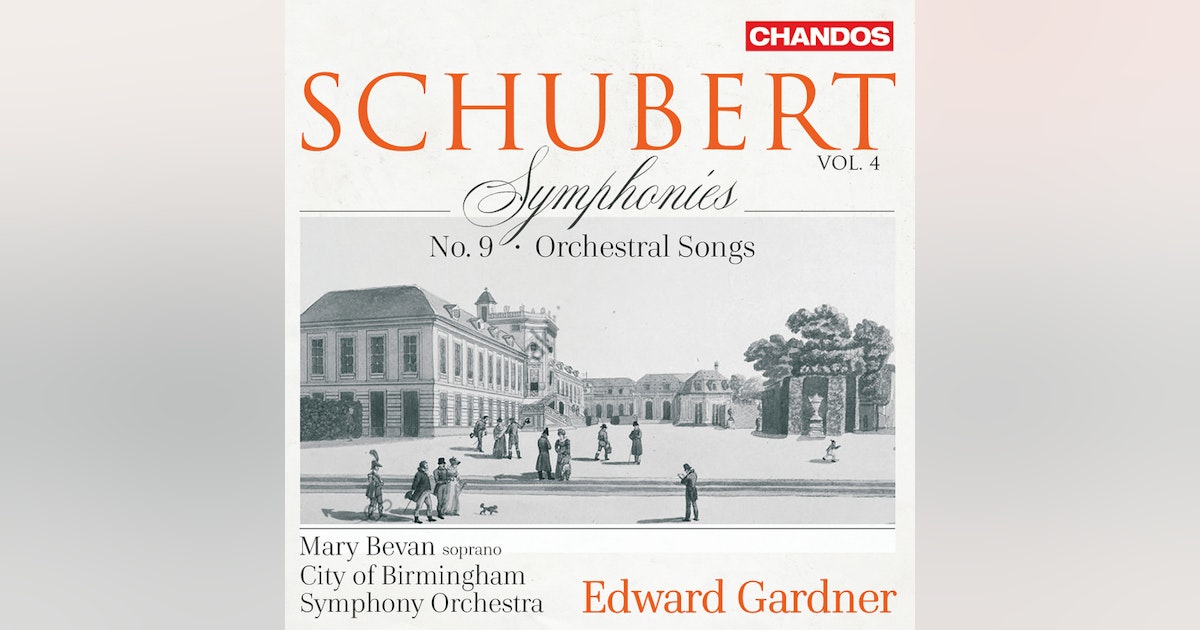
This was the conclusion of Edward Gardner’s Schubert cycle (we covered volume 3 here, . The great composer’s earlier symphonies produced daily regularly – round one a yea between 1813 and 1818. You might remember we covered Concerto Budapest’s vision (which they chose to label “No. 8”) here; his was surpassed byMarek Janowski ad the Dresden Philharmonic here (which remains our top recommendation of recent recordings)
he Ninth stands part in all sorts of ways, not just tempoally. It’s much lager canvas is reflected in its nickname (“Great”), which also distinguish it from Schubert’s the C Major symphony (No. 6).
Thee are hundreds, if not thousands, of versions available. But Gardner’s is worth hearing: it is fresh, in each and every turn. Perhaps he does not present the structure as wonderfully as did, say, Günter Wand (there are recordings, but how I remember a BBC SO concert at the Festival Hall in London – just Schubert 8 and 9, but spellbinding).
Here’s Edward Gardner introducing the disc:
Gardner favours freshness everywhere: strings are tight, woodwind ever-accurate. But he does also honour the characteristic scoring of this symphony, with its tone-colour emphasis on trombones:
The first movement hurtles ever onwards, excitingly. The Andante con moto is certainly walking pace with movement as prescribed , but also acts in lovely contrast, woodwind characterful, supposed by the lightest string staccatos. When the oboe blossoms out, we are suddenly in pastoral mode. Yes, there are contrasts here, but not sky-shaking ones …
Nice to hear hard-headed timpani underpinning this, too. The Scherzo is Gardner’s finest movement: so alive, the strings digging in and yet retaining fine articulation. Accents positively sting:
The finale is more Presto than Allegro vivacissimo, but it is certainly exciting. The more relaxed moments sound fast, but not used. Not my fist choice Ninth (perhaps it sits between Concerto Budapest and Dresden), but a satisfying listen, certainly.
The soprano Mary Bevan joins Edward Gardner and the CBSO in a selection of orchestral songs that complete the album. But this is tue gold, eclipsing the symphony by some way. The famous trout (Die Forelle) is heard in Britten’s orchestration of 1942. The accompaniment is light as can be (all credit to the CBSO’s clarinet); but it is Mary Bevan’s glorious voice and innate alignment to Schubert’s world that captivates so much:
The one “pure” Schubert vocal item is the Romanze from Rosamunde. “Der Vollmond stahlt auf Bergeshöhn” sings the vocalist, “the full moon beams on the mountain tops”. Magical indeed, Gardner finding a nice lilt in the orchestral contribution:
Berlioz was never going to be half-hearted in his orchestration of Elkönig, and so it is. There is the odd new countermelody, too, but he also helps to underline the different “voices” Bevan has to create (father, son, Erlkönig; at least she doesn’t have to imitate the horse). This is quite something!:
One Johannes Brahms orchestrated Geheimnis, scored for strings and a single horn. It is lovely. A sunset meditation on the day. Reger’s 1914 orchestration of Im Abendrot is masterly; this surely links directly to Richard Strauss’ own painting of a highly symbolic sunset: the music has the same glow in the Schubert/Reger as the Vier leztte Lieder, surely?. Bevan can float her voice so magically:
Absolutely worth the price for the Schubert song arrangements alone. Available at Amazon here. Streaming below.










